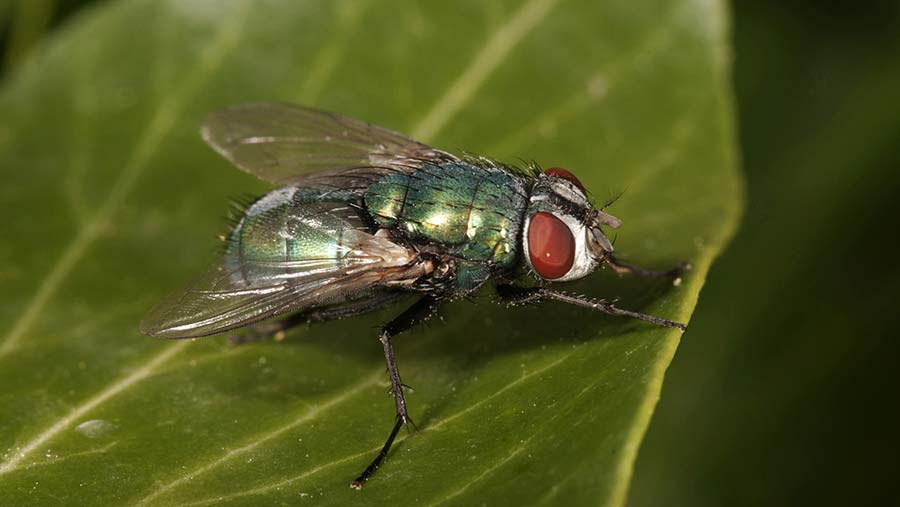Sheep farmers urged to look out for blowfly strike as temperatures rise
 © imageBROKER /REX/Shutterstock
© imageBROKER /REX/Shutterstock With temperatures on the rise, sheep farmers are being urged to remain vigilant for blowfly.
Blowfly strike is caused by the green bottle fly, which lays her eggs in the fleeces and wounds of sheep. It causes intense irritation, rubbing, biting and discomfort.
Vet Emily Gascoigne from Synergy Farm Health in Dorset said it is likely that sheep farmers will be caught out this year, especially as the parasite nematodirus, which can aid the development of fly strike, is already being seen in flocks in the South West two to three weeks earlier than last year.
“I think sheep farmers are under quite a lot of pressure at the moment with spring and it’s quite important for people not to get caught out with fly strike.
“A preventative strategy is very important.”
Identifying the risk
Blowfly eggs hatch once temperatures are sustained at 9-10C or higher.
At this time of year, as flocks head into the risk period, Miss Gascoigne said farmers should:
- Use fly traps to monitor if green bottle flies are present on farm
- Frequently inspect sheep for lesions or maggots
Clinical signs
- Discoloured/damp fleece
- Fleece loss due to rubbing
- Separation from flock
- Sick animals
- Death (caused by toxaemia when toxins are released from secondary bacterial infection)
Source: Nadis
Shearing
Flocks that shear ewes early will reduce their risk of fly strike by removing the damp wool that blowflies like to lay their eggs in. Instead, these flocks can be more prone to fly strike in the autumn once the fleece grows back.
In comparison, farms that shear sheep later may need to consider treating sheep with a product to prevent strike, Miss Gascoigne added.
Prevention and treatment
Licenced sprays or pour-on products containing cyromazine and dicyclanil can be used to prevent strike.
“Farmers need to speak to their vet or SQP about which product to use,” urged Miss Gascoigne, who added withdrawal periods prevent sheep from being shorn for certain periods after treatment, depending on the product used.
Meanwhile, very sick ewes suffering from toxaemia – caused by secondary infection from strike-induced wounds – will require fluids or antibiotics and anti-inflammatories, in addition to topical treatment to kill maggots, she added.
How parasites can increase blowfly risk
“Parasite management is going to be a huge driver in protecting lambs from getting infected [with blowfly]. I am concerned about the risk of parasites this year.”
Miss Gascoigne encouraged farmers to carry out FECs and keep lambs’ back ends clean.
“Dags are fertile ground for maggots – they are warm, wet and smelly. It is attractive for flies to lay their eggs, so keeping lambs clean is really important.
“The risk factor for fly strike will vary depending on flock and system, so there’s isn’t a one-size-fits-all solution. Each flock needs to assess its own risk factors in ewes and lambs and ensure parasite control is up to date.”
Live tracker
To help sheep producers, Elanco Animal Health and the National Animal Disease Information Service (Nadis) have developed an interactive map to provide farmers with real-time updates on blowfly risk.
It uses data from the Met Office to predict the emergence of blowflies and produce forecasts.
Farmers can also report cases of blowfly in their flock to help highlight areas already hit by the disease.
The map is split into small grids to allow more localised reporting and uses a colour code to distribute risk: green (low risk), amber (medium risk) and red (high risk).
You can report a case or review the risk in your area online.
